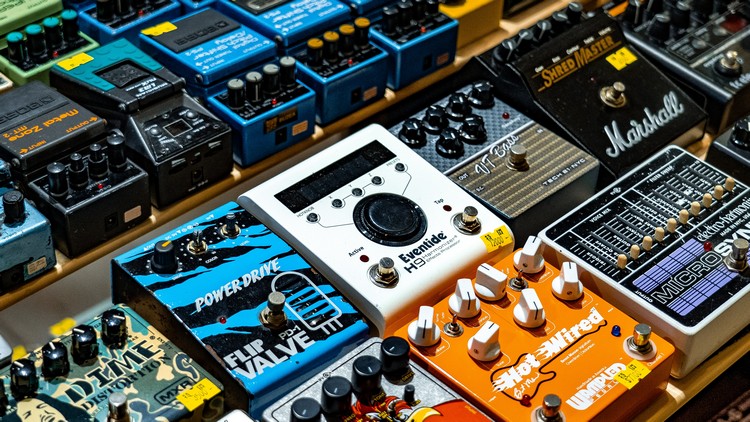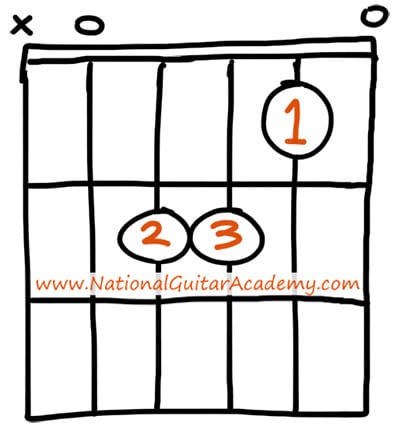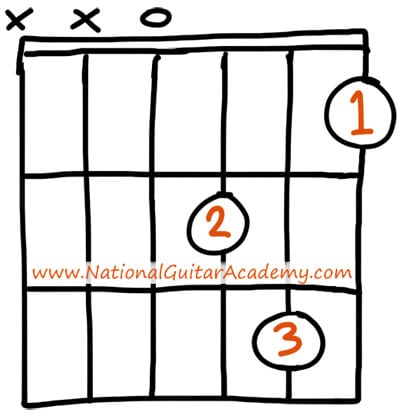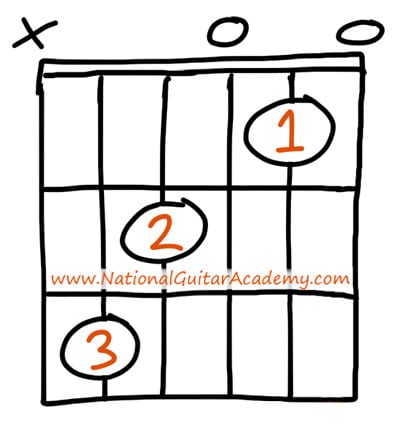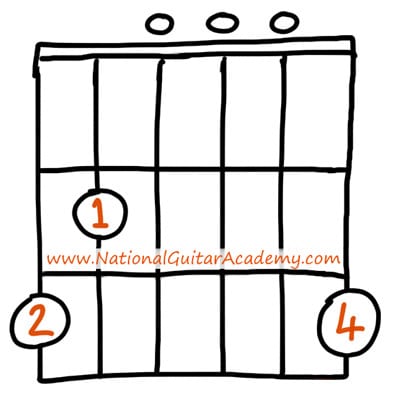If you’re looking to buy the perfect loop machine, we’ll teach you how to find it and how to use it as well!
Over 100,000 guitar-learners get our world-class guitar tips & tutorials sent straight to their inbox:
Click here to join them
Get our best guitar tips & videos
In this free lesson you will learn…
- How to find the perfect loop machine for you
- The different types of loopers and their distinctions
- Tips for getting your loops to sound tight and rhythmic
- How to create a loop from scratch in three sections
- An awesome scale to solo over your new loop with
Let’s Learn How To Find (And How To Use) The Right Loop Machine For You
One of the best things we can do as musicians of any level is to learn how to accompany ourselves.
When we only have one guitar and two hands however, that can seem a bit difficult at first.
But there’s a pretty neat solution that’s been invented (and reinvented) to help us solve this problem:
It’s called a loop machine.
These wonderful little devices help us record ourselves in layers to create the simulation of a full band of guitarists with only one in the room. Pretty cool, right?
We think so – let’s learn more about it!
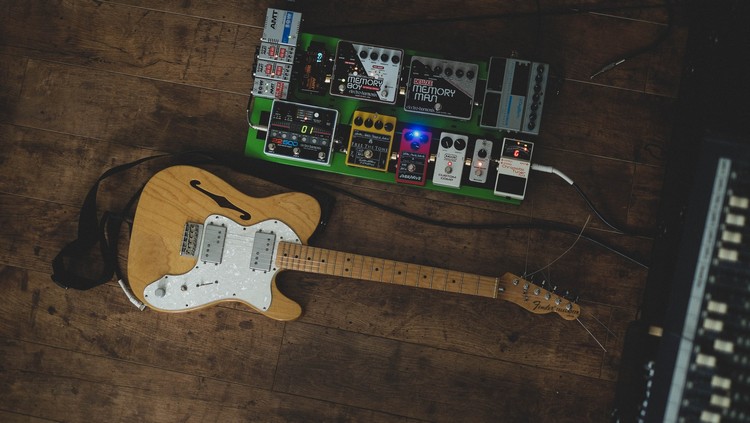
How Does A Loop Machine Work?
Most units have one or two inputs on them, allowing us to connect our guitar as well as another instrument.
Some units also have an XLR jack so you can connect a microphone, if you’re the singing type (or trying to be).
Loopers come in pedal form, small enough to fit on your pedalboard with ease. They also come in a variety of different tabletop formats if you’d rather not tapdance while you play guitar.
A loop machine works by triggering a recording signal off and on.
We can begin by laying down a chord progression, and then steadily building on top of it.
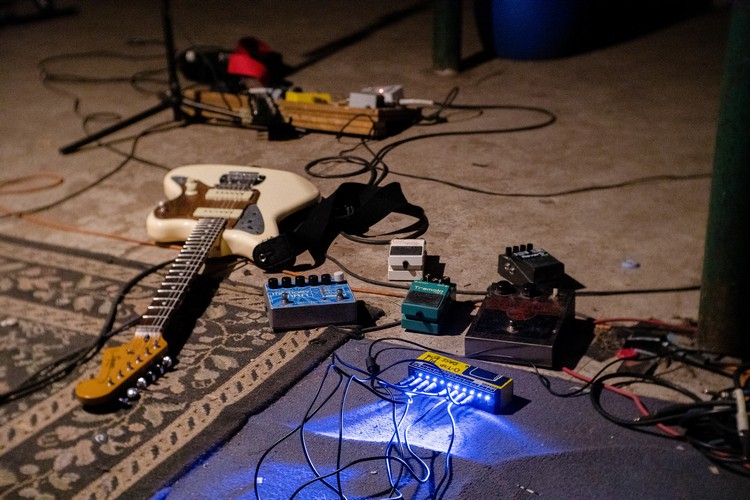
A loop machine is much the same as recording to a single line of tape, where you would layer sounds on top of that tape over and over by playing it back.
This is the same idea, only it’s digital, which means you don’t have to reset the tape every time you want to record a new idea over the original.
It also means you can save your ideas to internal storage and come back to them over and over again.
In this lesson, we’re going to learn about how these tools work.
We’re also going to teach you your first easy-to-play looping song using four chords.
Let’s dive in.
Learn 12 EASY beginner chords with our popular guide


Where should we send it?
✅ Stop struggling. Start making music.
✅ Learn beginner-friendly versions of every chord.
This is our most popular guide and it will improve your chord ability quickly! 😎
Get your own personalised guitar-learning plan 🎸
Get a custom guitar-learning plan here: Click here for GuitarMetrics™
World-Class Guitar Courses 🌎
Learn from the world's best guitar educators: Click here for our guitar courses
What Is The Benefit Of A Loop Machine?
A loop machine is a wonderful tool for helping guitarists learn a variety of different musical principles.
These little units teach us all about:
- Writing melodies
- Keeping good rhythm and time
- Harmony
- Songwriting principles
- How to write complimentary musical sections
- And so much more!
The fact of the matter in music is this:
You yourself are the hardest person to jam with by nature, and a loop machine helps to make that process easier.
Why?
Because when we start out playing guitar, we aren’t yet aware of things like rhythm, timing, or melody. We learn these things through practice.
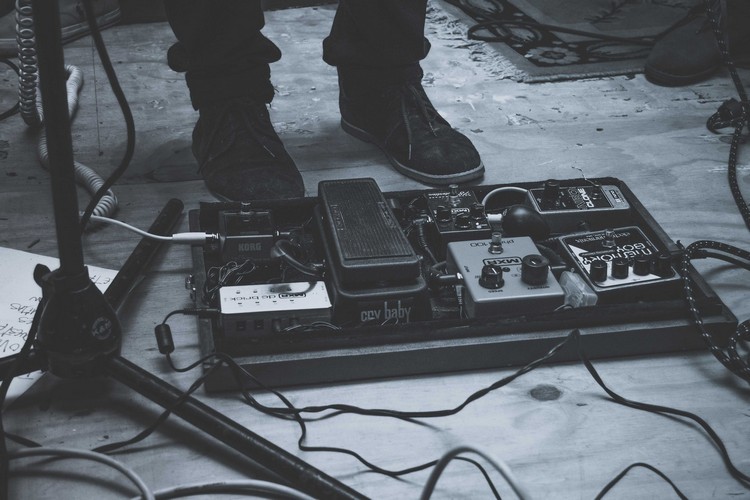
The biggest benefit of a loop machine is that it helps you record what you learn and practice it more effectively.
Just learned a chord progression? Try recording it into your looper to get the timing down properly.
Once you’ve recorded it in good time, try adding complimentary notes and a melody.
Now, find more notes that work with that melody and add a harmony. The process goes on from there.
You can even record yourself slapping the strings to add percussion or a beat to your recording.
From four chords, you added a melody, a harmony, and percussion – that’s a whole song, all done within the loop machine. This is why we love these units so much.
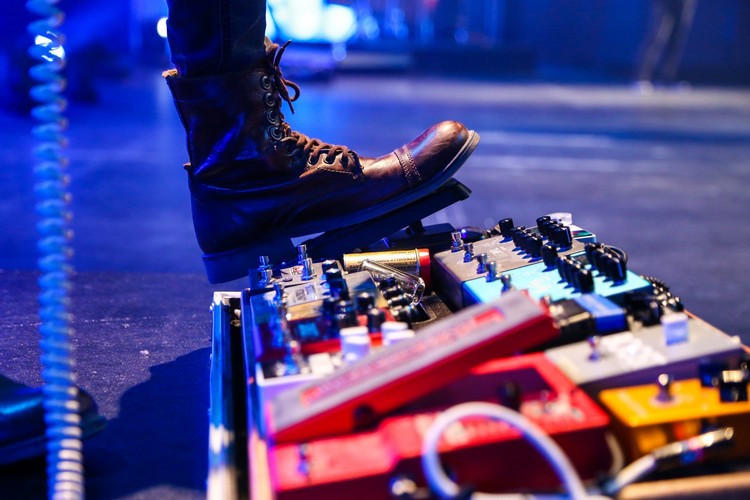
Which Loop Machine Is Right For Me?
Everybody has a different preference for the musical tools they use.
Whether you’ve got a desktop recording setup or you just want something small to throw on your pedalboard, we’re going to look at the different options you have for finding a looper that’s right for you.
- Loop Pedal (Single)
This style of loop machine takes up minimal space on your pedalboard, and usually features a single track to record on as well as a single on/off trigger button.
These are wonderful for early-stage loopers that are looking to learn how to record themselves in a simple and easy-to-use format.
Examples: Ditto Looper, BOSS RC-1
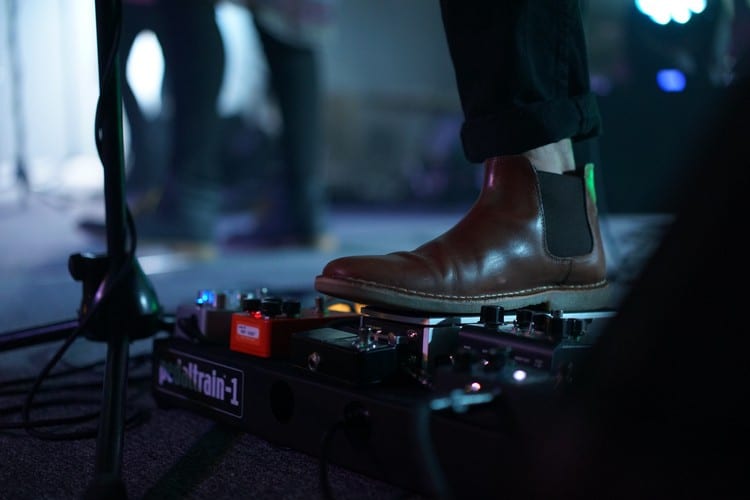
- Dual Loop Pedal
These machines feature a bit more than the standard single design listed above. These pedals take up more real estate on your pedalboard but feature two tracks to record on, giving you room to trigger certain recorded sounds off and on without stopping the whole track.
Some of these pedals come with built in effects, such as the BOSS RC-30.
These pedals are great for loopers who want to experiment with sounds a bit more, and are ideal for those interested in learning to write songs.
Examples: BOSS RC-30, Pigtronix Infinity 2
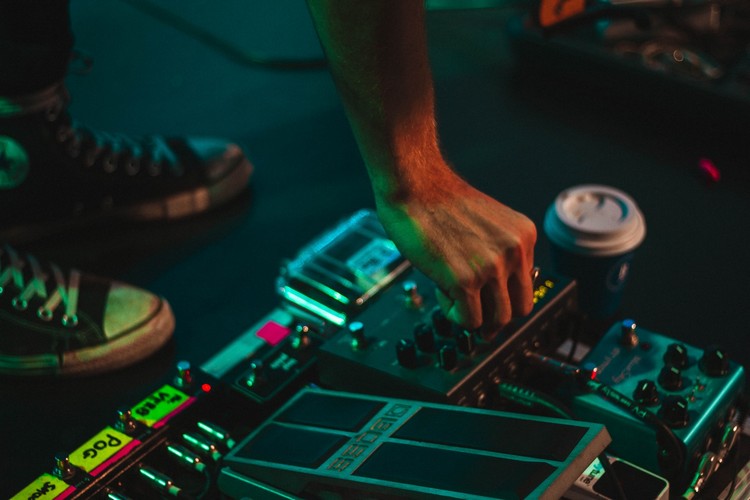
- Multitrack Loop Machine
These pedals are big, but they give us plenty of room to play with different tracks and ideas. Multitrack loopers allow for 4+ tracks to be recorded and played, as well as modified in different ways.
If you’re looking for a looping unit that will handle everything you need on your pedalboard with limitless possibility, this is it.
Examples: EHX 95000, BOSS RC-300, Headrush Looperboard
- Desktop Loop Machine
These units aren’t designed to be operated with your feet, rather with your hands.
These loopers were designed for vocalists who want to harmonize, but have been used by a variety of different musicians including guitarists.
If you’re looking for something with a lot of options and effects that doesn’t need to live on your pedalboard, this is the loop machine for you.
Examples: BOSS RC-202
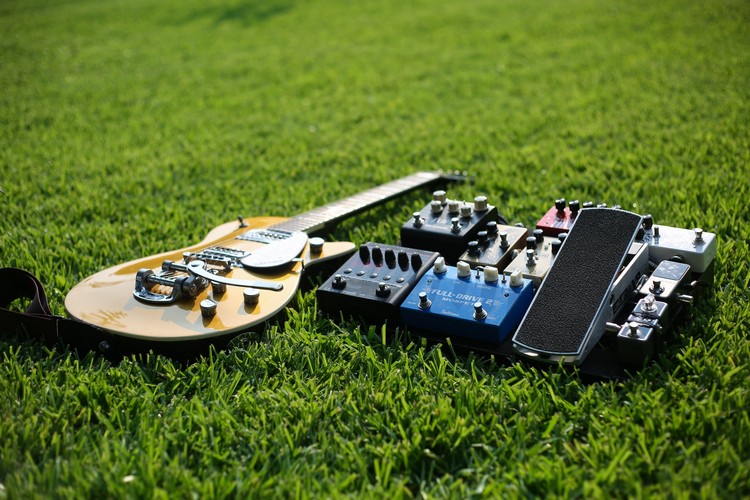
Do I Need A Big Loop Machine?
Definitely not!
Options are great to have, but option paralysis is a real thing to be aware of.
Sometimes, too much is just too much.
If you’re a beginner guitarist, we highly recommend a small single or dual track loop machine to get yourself started.
The beauty of music gear is that you can always upgrade as you need and sell your old gear.
Consider starting small and working up as you require more from your looping setup, and you’ll most always be satisfied with your gear.
Once you’ve made your big purchase though, we’re going to have to learn how to use it.

Loop Machine Exercises – How To Approach Looping
In this next section, we’re going to teach you how to use your newly-purchased looper using playable exercises.
This first exercise will focus exclusively on building a melodic foundation that you can play with, and the second will focus on building melodies.
Pro Tip: Make sure to save the loop you make in this first exercise, as you’ll be using it in the second exercise as well.
Let’s start by strumming four chords using eighth notes.
“1 & 2 & 3 & 4 &”
The “&” notes should be strummed lightly with upstrokes, while the numbered counts should be strummed more heavily with downstrokes.
Check out the chords we’re using below, and give each chord one full bar:
A MINOR
D MINOR
C MAJOR
G MAJOR
We want to play these chords into our loop machine at a steady pace, so here are a few pro tips for getting the rhythm down properly before you record:
- Practice to a metronome – This seemingly-annoying little click track can save your life when it comes to recording yourself.
Set the metronome to 100bpm and count on every beat. It may seem slow, but it will help you pace out your strumming evenly.
- Play slow and play steadily – focus not on speed, but on getting the sound of the chords to play clearly. Rotating your wrist to accommodate different chords is key to playing easily and comfortably.
- Don’t be afraid to use stepping-stone chords to make this chord progression easier if you’re just starting out.
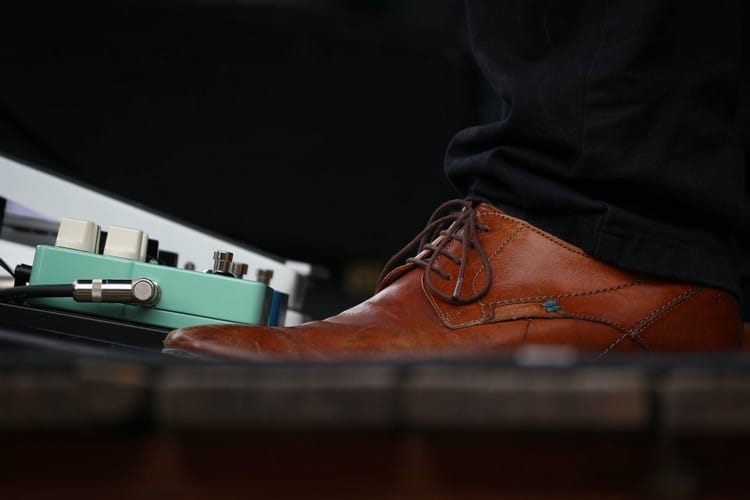
Now that we’ve got some practice in, let’s throw these chords into the loop machine.
Start your first looping exercise below.
Download our lead guitar cheat-sheet to make things easier
It's hard to understand which scales work with which keys.
So we created a cheat-sheet! A key and scale-finder that you can use again and again.
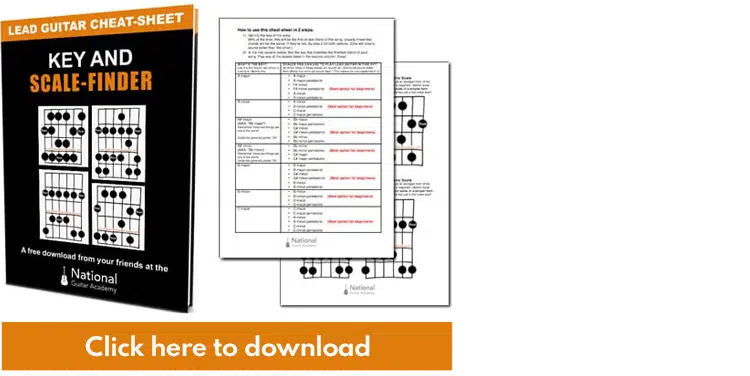
Get your personalised guitar-learning plan 🎸
Get a custom guitar-learning plan here: Click here for GuitarMetrics™
World-Class Guitar Courses 🌎
Learn from the world's best guitar educators: Click here for our guitar courses
Exercise #1 – Use Chords As A Foundation
It’s time to start recording – are you ready?
We’re going to have fun with this. Start by playing the four chords discussed above into your loop pedal.
We want to get the rhythm sounding consistent, so don’t be afraid to do a few runs through before you settle on one recording.
Once you’ve got a recording down that you’re happy with, we need to start adding some layers.
Pro Tip: It’s a good idea to play through your loop one time before recording it. Practice triggering the loop machine on the “1” count after your last bar of the progression.
Ex: 1 & 2 & 3 & 4 & 1 < Trigger loop ON here
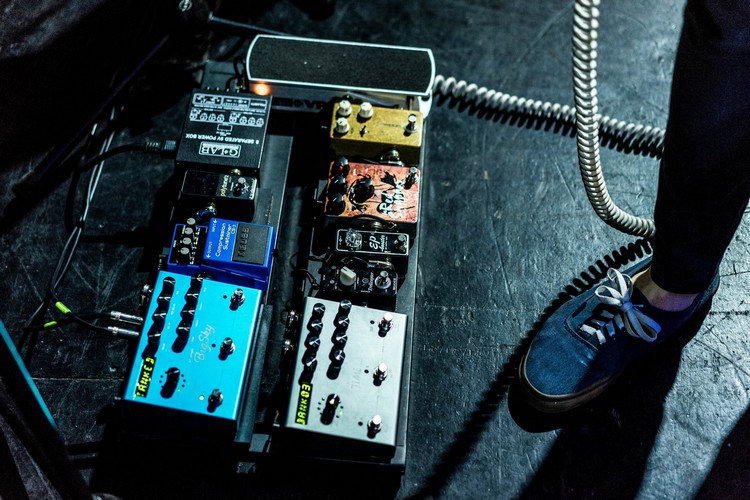
The first thing we can do to begin adding layers to our loop is to play the lowest root note of each chord.
This helps us reinforce the bass section of our arrangement with lower notes.
Pro Tip: If you use stepping stone chords for this loop, you will really hear the distinction between the high register and the lower register of your guitar.
Play this section in whole notes instead of eighth notes to add some distinction to this layer.
Each bass note should be played once per chord.
Notice how the root notes are more audible because they are played less frequently than the chords themselves?
Now we’ve given this first layer some separation from what’s already happening in our loop machine.

Exercise #2 – Adding To The Arrangement
Now that we have a foundation, we can begin adding more to it.
When it comes to learning how to use a looper, it’s important to have a bit of knowledge of the fretboard and which notes are complementary to one another.
In this arrangement, we’re playing in the key of A minor, using the following notes:
A – B – C – D – E – F – G
This means that these notes are “safe” to play anywhere across the fretboard.
If you want a crash course in music theory to help you with this, click here.
Have a look at the A minor scale shape below, play it over the progression you’ve recorded, then scroll down to put it into practice.

Now that we’ve heard these notes over our loop machine arrangement, our ears can become more familiar with how they interact with the chord progression.
Let’s start by recording a melody over top using whole notes once again.
We’re going to play this melody on the top two strings in the fifth position to add some more distinction to our arrangement.
Pro Tip: As you begin to build arrangements more and more with your loop machine, you may notice how important it is to use the different tonal registers (bass, middle and treble) in order to create separation in your layers.
Experiment with this and you’ll love the results you get!
Check out the melody below and play each note once per chord in sequence:

Understanding This Loop Machine Lesson
So we’ve created our first loop with three distinct parts, but what have we done exactly?
Before we sign off, we want to make sure that you understand all of what’s happened in this lesson and exercise.
Let’s review:
- We learned the different types of loop pedals and understood which one works best for beginners
- We laid down a four bar loop of chords that we could build on top of
- We played a bassline using the root notes of those chords that complimented the existing loop
- We played a melody overtop of the bass and progression to round the loop out to completion
From here, we recommend using the A minor scale tab listed above to practice soloing over the loop you’ve created. Give it a shot.
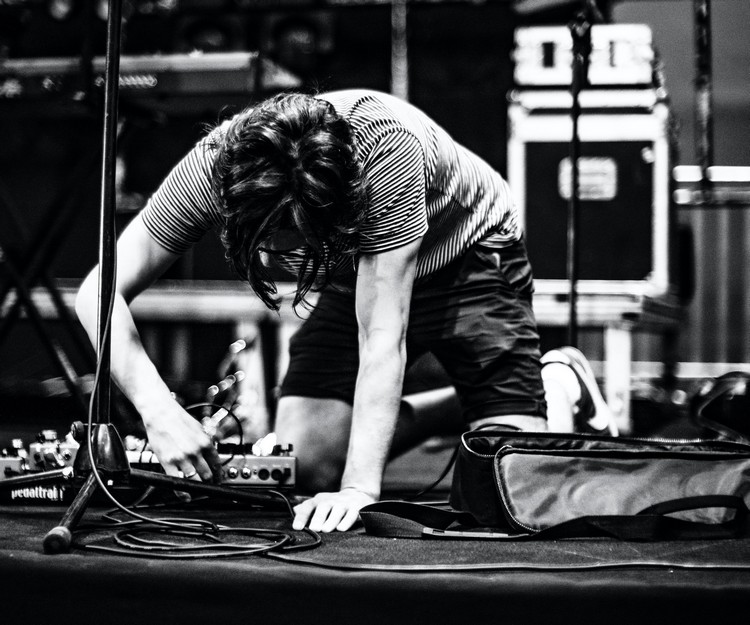
How To Master The Loop Machine
Practice!
The loop machine is one of the best tools for teaching us all about music, and we highly recommend that every guitarist have one in their musical toolbox or on their pedalboard.
Pro Tip: If you already have a pedalboard that you’ve built with different effects, place your looper at the end of the chain, just before the amp. This way, you will be able to record all of your effects into the unit and play them back. This leads to all sorts of new and exciting sounds.
Click here to see an amazing looping performance by Tash Sultana.
We’ve included some resources below that will give you more of the musical tools you need to master this amazing pedal. See below!
Recommended Resources
If you loved this lesson on how to find the right loop machine for you (and how to use it), you’ll love these supplementary lessons below:
- The A Minor Pentatonic Scale
- 9 Major Scale Patterns For Lead Guitarists
- An Essential Guide To The Pentatonic Scale
- Top 100 Chords
- The Ultimate Guide To Alternate Picking
What Type of Guitarist Are You?
Take our 60-second quiz & get your results: Take The Quiz
Join the world's best online guitar school 🌎
- Get your own personalised guitar learning plan (customised just for YOU).
- World-class online guitar courses. Learn at your own pace.
- Community Campus & Learning Forum - A friendly community! Connect with our team & students. 😊
- Beginner Song library with chordsheets, tabs and tips. (Songs suitable for all levels!)
- Regular live streams, seminars and Q&A sessions - Learn from world-class guitar educators. Get all your questions answered!
Click here to learn more about National Guitar Academy membership 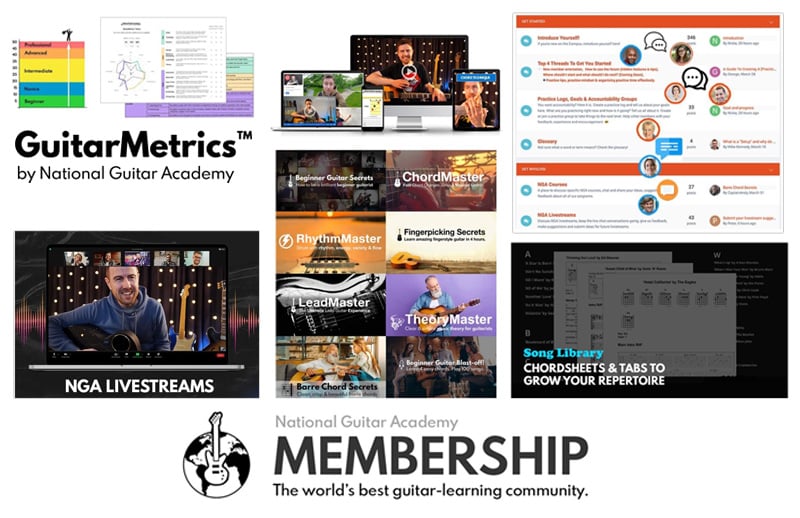
Cool Guitar T-shirts 😎
Look cooler! Check out our merch: Click here to see our merch store
Want free guitar tips and video lessons delivered to your inbox?
Join over 100,000 guitar-learners and subscribe to our guitar-tips-by-email service. (It's free.)
We'll send you a series of lessons that will move you to the next level of your guitar journey.
Learn how everything fits together quickly, easily and effectively. We share ninja tips (for instant fun!) but also timeless fundamentals that will deepen your understanding.


Get our best guitar tips & videos
Popular Lessons
How To Learn Guitar: An 11-Step Programme For Beginners
How To Choose The Perfect Beginner Guitar
More Cool Guitar Stuff
Learn about National Guitar Academy: About Us
Join us on Facebook for daily guitar tips.
Listen to our Learn Guitar Podcast for rapid guitar progress.
Check out our free chord lessons.


